












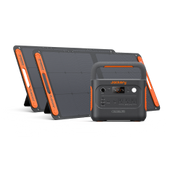


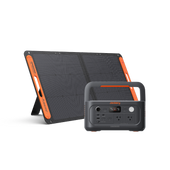
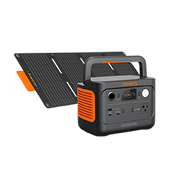



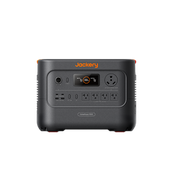
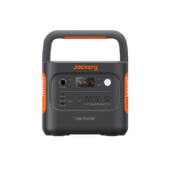





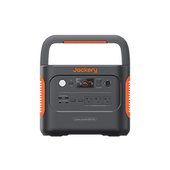





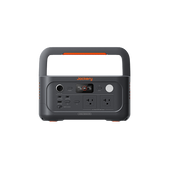

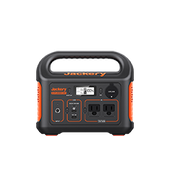
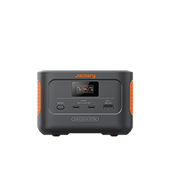
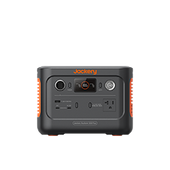

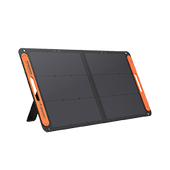



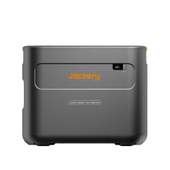





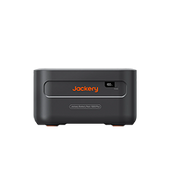


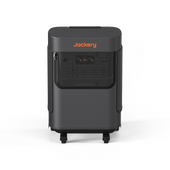
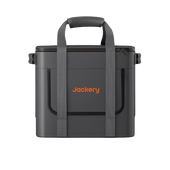
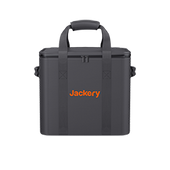


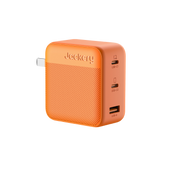

![[Add-on] Jackery Manual Transfer Switch for Explorer 5000 Plus](http://ca.jackery.com/cdn/shop/files/add-on-jackery-manual-transfer-switch-for-5000-plus-240V.webp?v=1757043692&width=170)
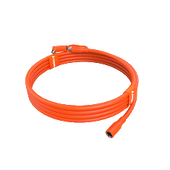



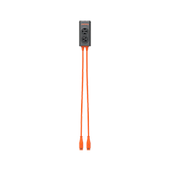



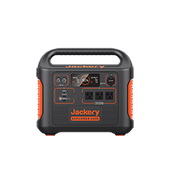
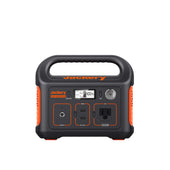

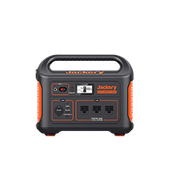

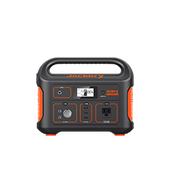



















































































































![[Add-on] Jackery Manual Transfer Switch for Explorer 5000 Plus](http://ca.jackery.com/cdn/shop/files/add-on-jackery-manual-transfer-switch-for-5000-plus-240V.webp?v=1757043692&width=170)














How James Cale Keeps His Northern Canadian Home Bright and Alive with Jackery Power.
Before sunrise, the snow lies deep across the open fields, glowing blue in the half-light. James Cale steps out of his cabin, his breath catching in the minus-forty air. The horses stir in their pen, and goats call for breakfast from a wooden shelter. The forest beyond stands silent and white, stretching for miles. Inside, the lights hum softly, steady through the cold. “Jackery runs the whole house,” he says. “Everything you see—TV, fridge, heater, Wi-Fi—all of it.”
James works as a locomotive engineer for Canadian National Railway, guiding freight trains across long winter corridors. When he is not on the rails, he lives completely off-grid with his wife on 340 acres of wilderness in northern Canada. “There’s no hydro here,” he says. “No cell service either. Just Starlink for Wi-Fi.”
For twelve years, James has hauled freight through snowstorms and prairie winds. Before that, he worked clearing trees for power-line maintenance. “I like working outdoors,” he says. “Running trains feels like keeping the country connected.”
At home, life moves differently. “We came here with nothing,” he recalls. “We sold our house so fast that we ended up living in a tent with a generator and one Jackery Explorer 5000 Plus.” That single unit powered a small fridge, a freezer, and a television while they built their first cabin. “It kept us alive at the start,” he says.
Those first weeks were harsh. Rain leaked through the tent seams, a storm tore down the gazebo, and every morning they woke to wet clothes and frozen boots. “Everything got wrecked—but not the Jackery,” James laughs. “It was dry, running, perfect.” Within weeks, he built a tiny cabin, then another, adding solar panels and more Jackery units as the project grew.
Now the land is alive with motion: horses, chickens, goats, rabbits, and a wide garden that feeds them year-round. His wife, a lifelong farm girl, milks goats before sunrise. “She was the one who wanted this,” he says. “She wanted her horses where she could see them from the window.”
When they bought the property, James attempted to connect it to the grid. “The hydro company gave me the runaround for a year,” he says. “Two poles down the road and that was it.” The cost and delay were impossible. “I thought, what now? We already sold the house, and we need power.”
His parents had an older solar system that cost twice as much as his and produced half the energy. “I didn’t want that headache,” he says. His brother, who already used Jackery, gave him a simple suggestion: try the 5000 Plus. “He told me, get it, trust me. Best advice I ever took.”
Today, James owns two Jackery Explorer 5000 Plus systems, four expansion batteries, and several Jackery Explorer 1000 for backup. One 5000 runs the household; the other powers the main circuits. “It literally runs everything,” he says. “Fridge, freezer, gaming PC, laptops, heater, TV, water pump.”
His cousin, a certified electrician, helped wire the cabin through a 240-volt outlet. “He couldn’t believe how easy it was,” James says. “Plug A into B. My wife can do it herself, no problem.”
In January, the temperature can fall below –49 °F. Before going fully off-grid, the nearby town lost power for days. “Pipes froze, the house almost burst,” he says. “If I’d had Jackery then, it would have been different.” Now, when neighbors complain about blackouts, he just smiles. “I never even know when the power’s out in town.”
The units are nearly silent. “I saw a YouTube video measuring generator noise and thought, really? I’ve never heard mine,” he says. “Just a faint hum, like a heartbeat.”
James’s brother was the first to switch to Jackery, and now the whole family is following. His parents, who own 150 acres nearby, plan to move north soon. “I’m trying to talk them into it,” he says. “They’ve spent thousands replacing batteries every few years.” Even his hairdresser, who lives partly off the grid, came to see his setup. “She couldn’t believe it ran the whole house,” he says.
At work, he has become the unofficial energy expert. “A coworker asked about portable power for his RV,” James says. “I told him, go Jackery, get the 3000. You’ll never look back.”
Beyond the household, the system powers tools for building horse shelters, heats the chicken coop, and pumps water from underground. “I haven’t found a single thing that can't run,” he says. When his kids visit in summer, they play on three TVs and consoles, all powered by the Jackery units. “Everything works—and it’s still quiet,” he says.
When James is away driving trains, he checks the power flow on the Jackery app. “I can see what’s running,” he says. “Sometimes I text my wife to switch off a light when I notice the draw.”
For James Cale, energy has become something personal. “Jackery made this life possible,” he says. “Without it, I’d still be living in town.” The orange boxes hum softly through the night, keeping the cabin warm and the lights alive.
Outside, the snow glows beneath the stars, untouched and endless. James stands by the fence, breath rising in the cold air. In the stillness, the house behind him shines like a lantern in the snow country, quiet, steady, and alive.
More